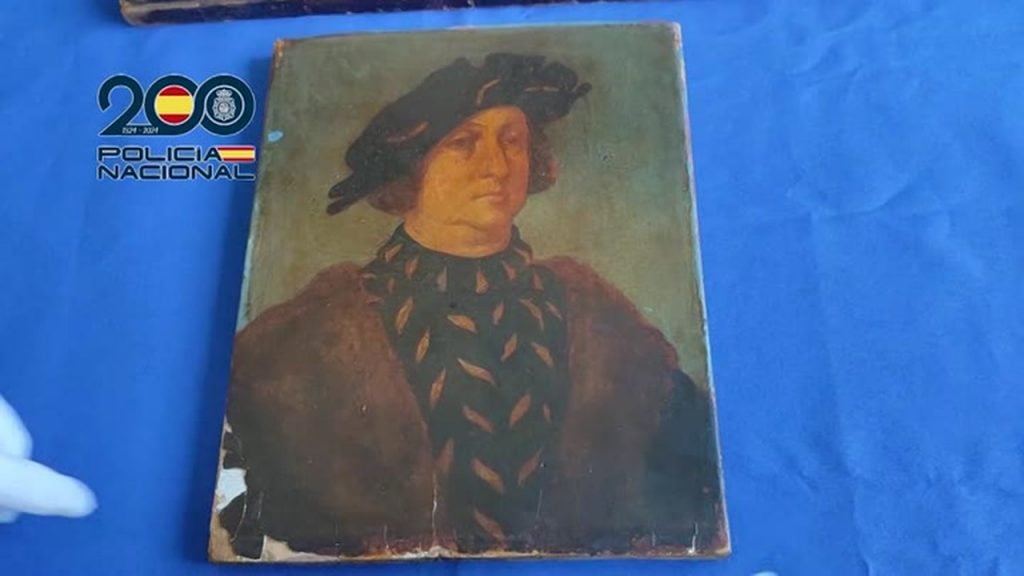Law & Politics
Spanish Police Halt Attempted Sale of Leonardo da Vinci Forgery
Spanish police have thwarted the sale of a Leonardo da Vinci forgery.

Spanish police have thwarted the sale of a Leonardo da Vinci forgery.

Sarah Cascone

Spanish police have thwarted the sale of a Leonardo da Vinci forgery. After border authorities seized the work in July 2022, experts at the Museo del Prado in Madrid conducted a careful examination of painting, and found it to be an early 20th-century fake.
Police then arrested the man who had been attempting to smuggle the work from Spain to Italy, through the border post in Modane, France. The suspect, in his 40s, was allegedly planned to sell the ersatz masterpiece for €1.3 million ($1.4 million).
At first glance, everything appeared to be in order. There was an export license identifying the painting as a portrait of an Italian aristocrat and military commander, Gian Giacomo Trivulzio. But then authorities realized that the license had expired—which meant it was no longer valid.
The red flag ultimately caused the forgery scheme to unravel.

The forged Leonardo da Vinci painting seized during a failed smuggling operation. Photo courtesy of the Spanish National Police.
“An export license isn’t a guarantee of a work’s authenticity,” a police spokesperson told the Guardian. “In this case, the license was being used as a means of claiming the painting was original. Once it became apparent that the license had expired, the painting was confiscated and an investigation was opened. As soon as the investigation determined that this was an alleged case of smuggling, the arrest was made.”
The Old Master forgery was presented as one of Leonardo’s works from when he was living in Milan, in the employ of the Duke, Ludovico Sforza, from about 1482 to 1499.
After analysis of the work, staff from the Prado determined it was probably made in the early 20th century as an intentional fake. It is only worth about €3,000 to €5,000 ($3,285 to $5,475), according to the museum.
It’s not clear if Leonardo ever painted Trivulzio, but the military leader did commission the artist to sculpt his tomb. The planned Trivulzio monument was to have been adapted from Leonardo’s design for a large equestrian statue of Francesco Sforza, Ludovico’s father. Neither work was ever realized. Leonardo only made drawings for Trivulzio, and a clay model of Francesco’s horse.